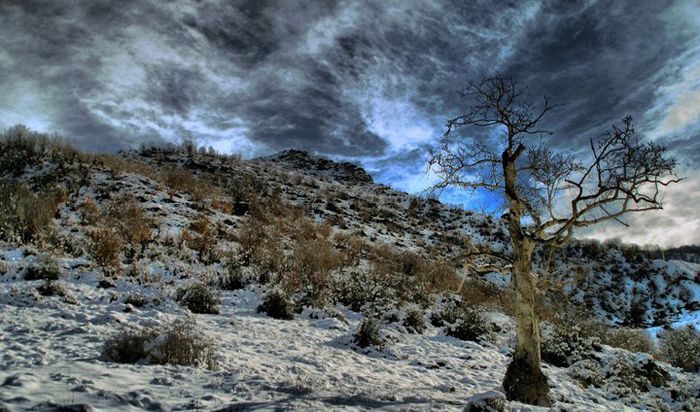|
|
Iran
|
Iran (/ɪˈrɑːn/ Persian: ایران), officially the Islamic Republic of Iran (Persian: جمهوری اسلامی ایران Jomhuri-ye Eslāmi-ye Irān), is a country in Southern and Western Asia. The name "Iran", which in Persian means "Land of the Aryans", has been in use natively since the Sassanian era. It came into use internationally in 1935, before which the country was known to the Western world as Persia ( /ˈpɜrʒə/ or /ˈpɜrʃə/). Both "Persia" and "Iran" are used interchangeably in cultural contexts; however, "Iran" is the name used officially in political contexts.
The 18th largest country in the world in terms of area at 1,648,195 km2 (636,372 sq mi), Iran has a population of around 79 million. It is a country of particular geopolitical significance owing to its location in the Middle East and central Eurasia. Iran is bordered on the north by Armenia, Azerbaijan and Turkmenistan. As Iran is a littoral state of the Caspian Sea, which is an inland sea, Kazakhstan and Russia are also Iran's direct neighbors to the north. Iran is bordered on the east by Afghanistan and Pakistan, on the south by the Persian Gulf and the Gulf of Oman, on the west by Iraq and on the northwest by Turkey. Tehran is the capital, the country's largest city and the political, cultural, commercial and industrial center of the nation. Iran is a regional power, and holds an important position in international energy security and world economy as a result of its large reserves of petroleum and natural gas. Iran has the second largest proven natural gas reserves in the world and the fourth largest proven petroleum reserves.
Iran is home to one of the world's oldest civilizations. The first dynasty in Iran formed during the Elamite kingdom in 2800 BC. The Iranian Medes unified Iran into an empire in 625 BC. They were succeeded by the Iranian Achaemenid Empire, the Hellenic Seleucid Empire and two subsequent Iranian empires, the Parthians and the Sassanids, before the Muslim conquest in 651 AD. Iranian post-Islamic dynasties and empires expanded the Persian language and culture throughout the Iranian plateau. Early Iranian dynasties which re-asserted Iranian independence included the Tahirids, Saffarids, Samanids and Buyids.
The blossoming of Persian literature, philosophy, medicine, astronomy, mathematics and art became major elements of Muslim civilization. Iranian identity continued despite foreign rule in the ensuing centuries and Persian culture was adopted also by the Ghaznavids, Seljuk, Ilkhanid and Timurid rulers. The emergence in 1501 of the Safavid dynasty, which promoted Twelver Shia Islam as the official religion of their empire, marked one of the most important turning points in Iranian and Muslim history. The Persian Constitutional Revolution established the nation's first parliament in 1906, within a constitutional monarchy. In 1953 Iran became an authoritarian regime, following a coup d'état instigated by the UK and US. Growing dissent with foreign influence culminated during the Iranian Revolution which led to establishment of an Islamic republic on 1 April 1979.
|
|









